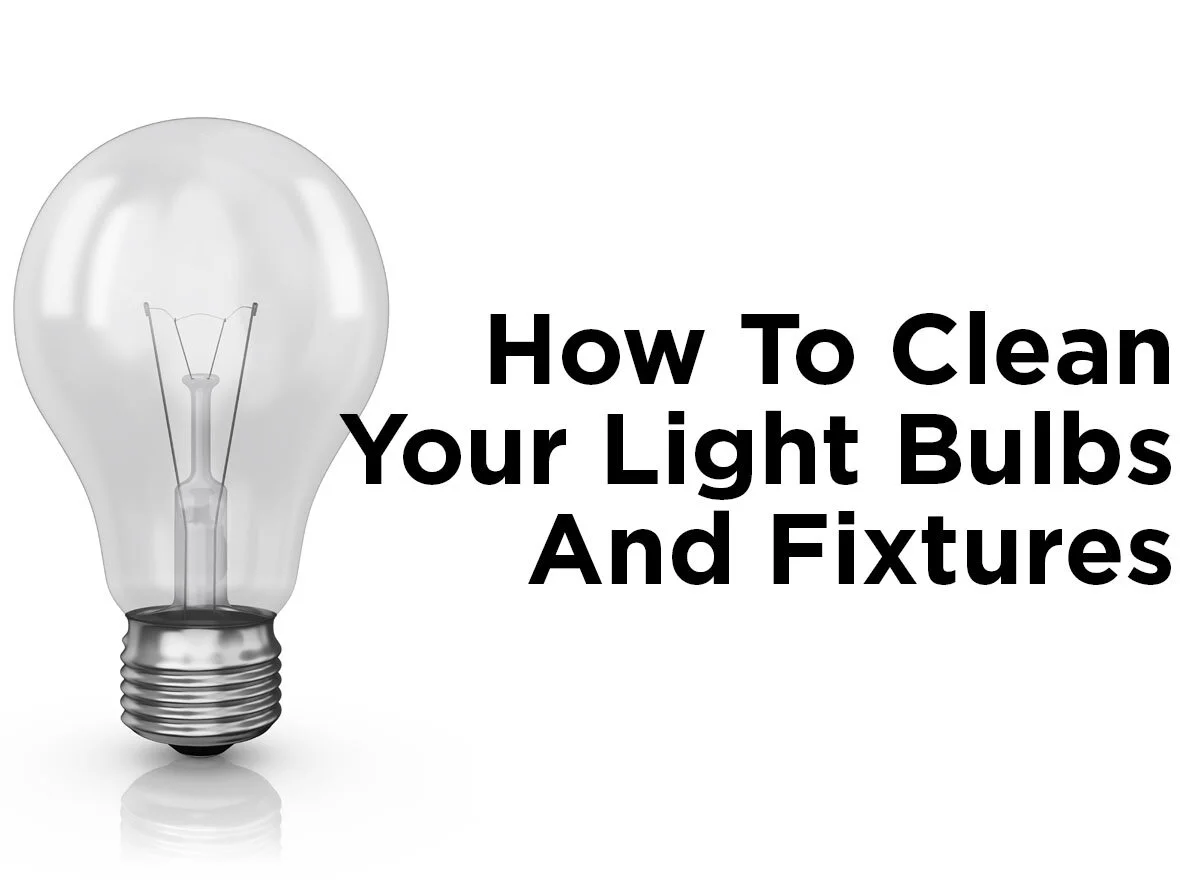How to Clean Your Light Bulbs and Fixtures
Have you ever found yourself turning on an extra lamp in a once adequately bright room? That's a sure sign of dusty and neglected light bulbs. While cleaning your light bulbs might not be at the top of your priority list, doing so is an easy way to enhance your lighting without purchasing new bulbs. Cleaning your bulbs can make your room up to 20% brighter – that's 20% more illumination for the same amount of energy! Since cleaning your fixtures as well will only further freshen up your home, here are some effective ways to tidy up your light bulbs, light fixtures, and lampshades.
NOTE: Before cleaning any of your light bulbs or fixtures, make sure your lights are completely turned off and cooled down to avoid the risk of burns or shock. For extra precaution, turn your lights off at the circuit breaker.
Light Bulbs
A regular incandescent bulb lasts between 1,000 and 3,000 hours. That’s plenty of time to collect a thin layer of dust. And with the long life spans of CFL and LED light bulbs (6,000 – 8,000 hours and 20,000 – 50,000 hours respectively) they are bound to get even dirtier. But regardless of technology, clean your light bulbs by simply wiping them off with a soft, dry cloth. Don’t use a damp cloth because the water might enter crevices in the bulb that can damage the electronics, and don’t use cleaning solutions on your bulbs to avoid damaging the glass. As fluorescent tubes are typically made of more durable materials than other bulbs, it’s usually fine to use a damp cloth on them.
Light Fixtures
Recessed Can Lights: Recessed can lights are mounted high within ceilings, so you will need a ladder to access them.To clean your recessed can lights, remove the bulbs and dust the insides of the canisters with a long handle duster that can trap dust and cobwebs. Then wipe the insides of canisters and the bulbs with a microfiber cloth or damp rag.
Lenses and Covers: Light fixture lenses and covers are especially important to keep clean. Not only do they become dusty and grimy, but they can also become unsightly resting places for dead bugs. After shutting off and cooling down your lights, get on a ladder to remove your fixture lenses and covers and place them into a sink of soapy water. Scrub them thoroughly to remove the dirt and grime, and dry them off with a microfiber cloth. Do NOT put your small glass fixtures into the dishwater. They probably are not dishwater-safe and can easily shatter.
Pendant Lights: Since pendant lights hang lower than ceiling fixtures, you will usually be able to clean them without a ladder. After turning off the lights and allowing the bulbs to cool, spray and wipe the outside of the pendants with cleaning spray and a microfiber cloth. Wipe the extension rods using only a dry cloth.
Glass Chandeliers: Cleaning glass chandeliers can be a bit tricky. While you should dust your chandeliers on a regular basis, about once or twice a year you should put in the extra effort to make those crystals sparkle with a more thorough cleaning. You’ll need goggles, a lamb’s-wool duster, an umbrella, and a spray bottle filled with a 50/50 solution of water and vinegar. To begin, dust the chandelier, and then hang the umbrella under the chandelier, hooking the handle over an arm of the light fixture. Spray the crystals with the vinegar solution until they drip – the umbrella will catch the dirty water. After they’re dry, polish each crystal with a microfiber cloth. If your chandelier cannot support an umbrella, simply lay down a towel on the floor underneath it.
Lampshades
Paper, Fabric, or Silk Lampshades: To clean lampshades made of paper, fabric, or fine silks, we recommend using a lamb’s-wool duster instead of a rag. Lamb’s-wool dusters will attract dirt without leaving residue the way cloth-on-cloth sometimes does. For deeply embellished shades, you may want to use the brush attachment of your vacuum cleaner.
Glass Lampshades: Clean glass shades by dipping them in a sink filled with soapy water. Rinse them thoroughly and let them air dry on towels.
More Tips and Tricks
When dusting or spraying overhead fixtures, wear goggles to prevent the debris from hurting your eyes and place a towel underneath your work site to avoid a messy floor.
Dryer sheets are a cost-effective alternative for dusting bulbs in place of microfiber cloths.
If you have difficulty removing the bulb from a recessed light, cut a 12-inch strip of duct tape and fold it over the bulb. The ends will act like handles that will be easier to grip than the glass.
You should now have a decent handle on how to clean your lights and fixtures. To keep them in pristine condition, repeat the processes above about once a month, or as often as it is practical for you. Remember to use common sense when cleaning your fixtures; each fixture is a bit different and may have slightly different cleaning requirements.
Still have lingering questions about how to clean your lights? Tell us below in the comments or send us a line on Facebook, Twitter, LinkedIn, or Pinterest!







